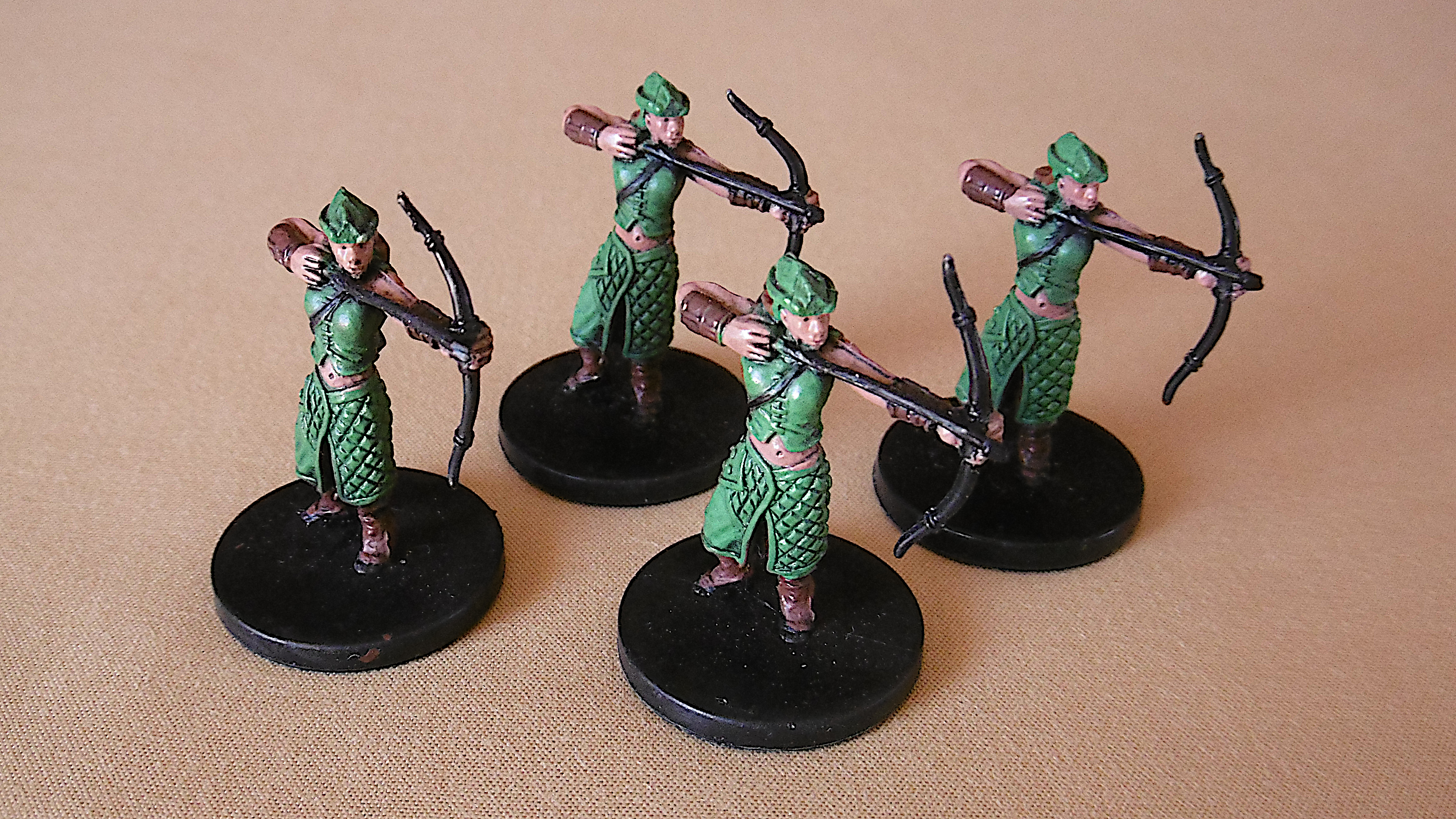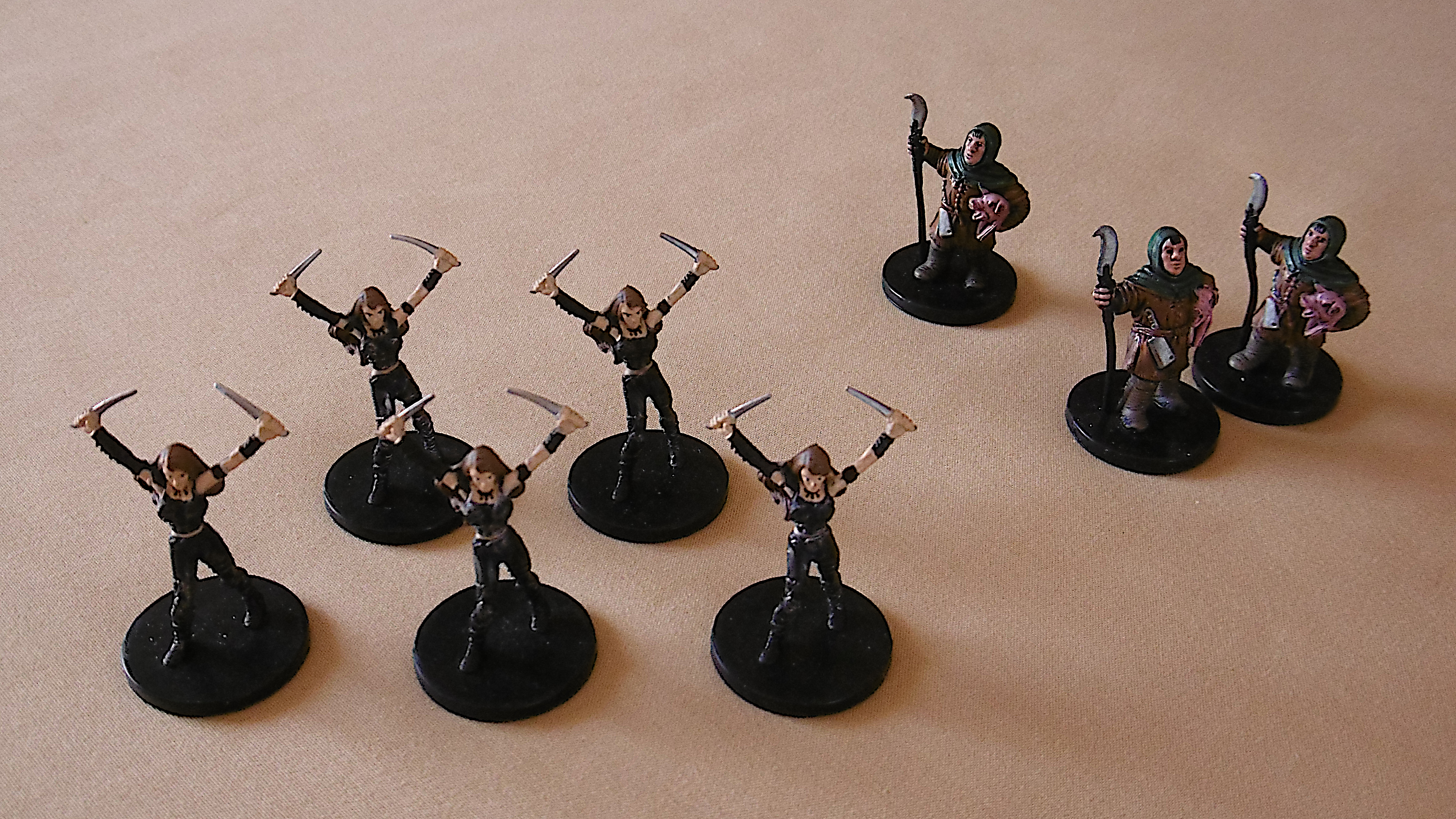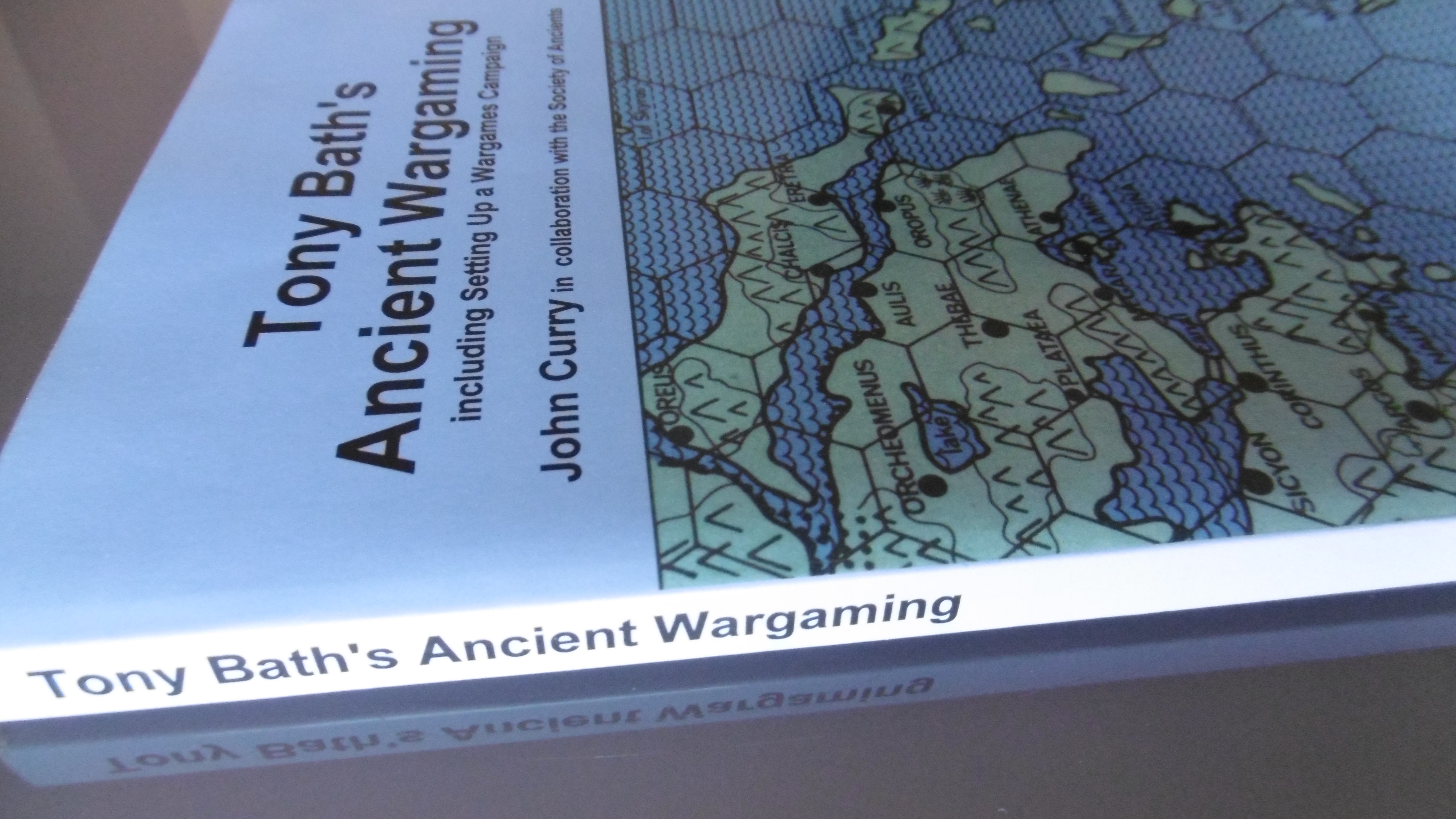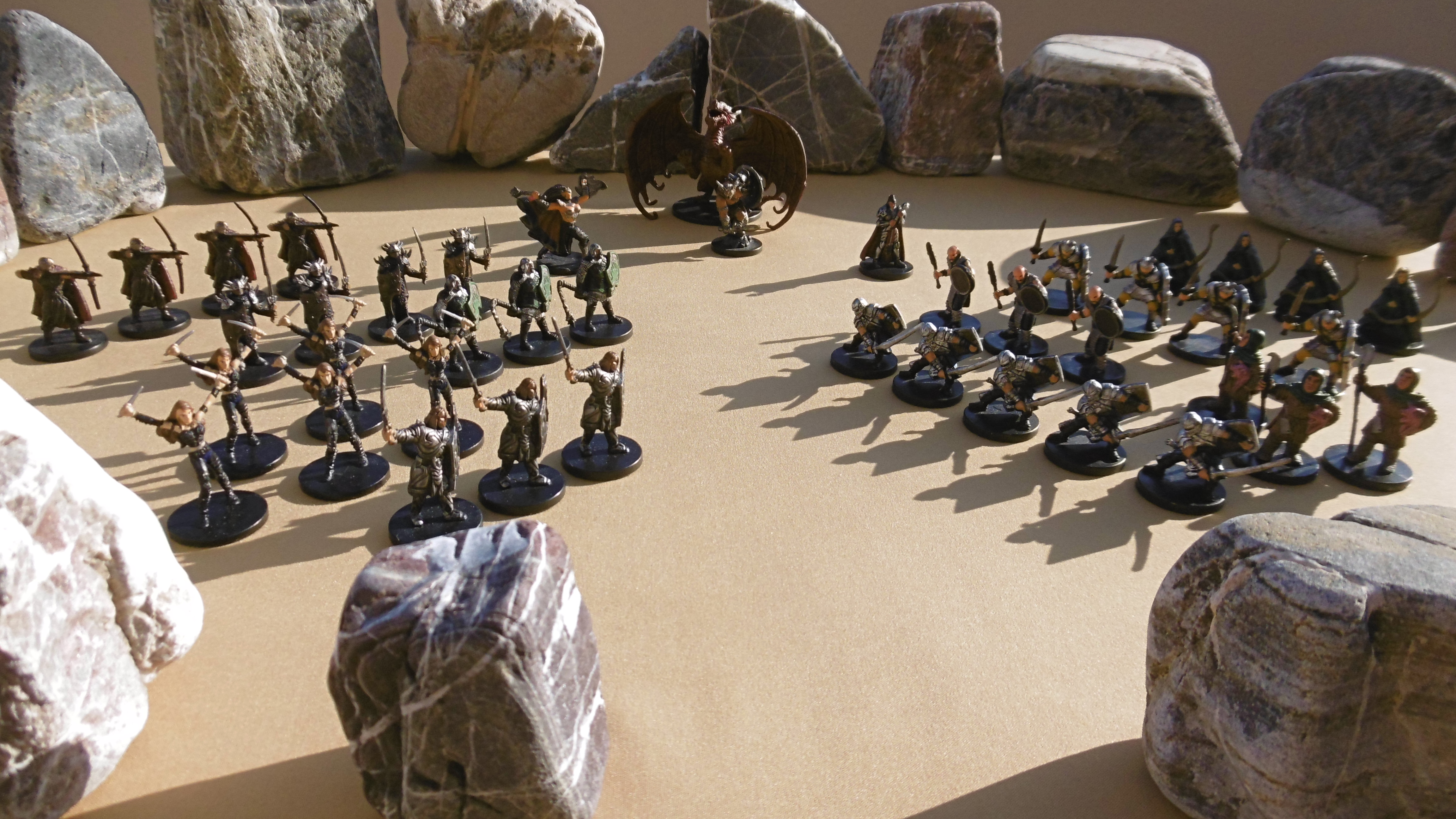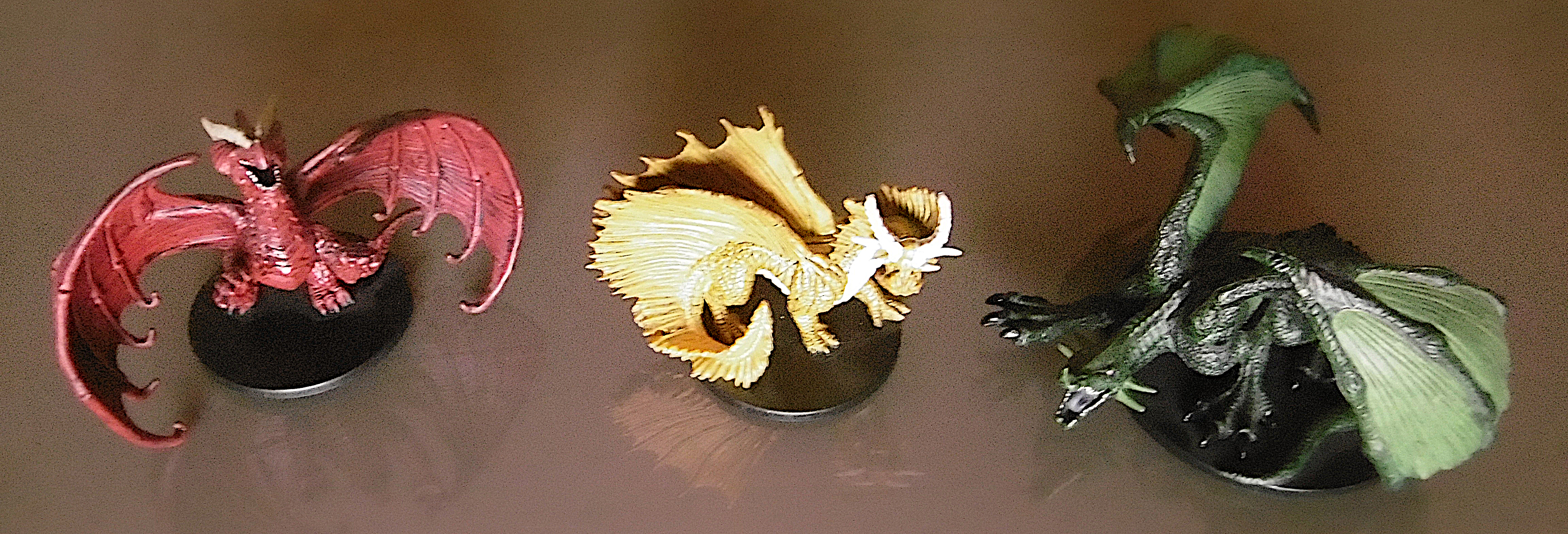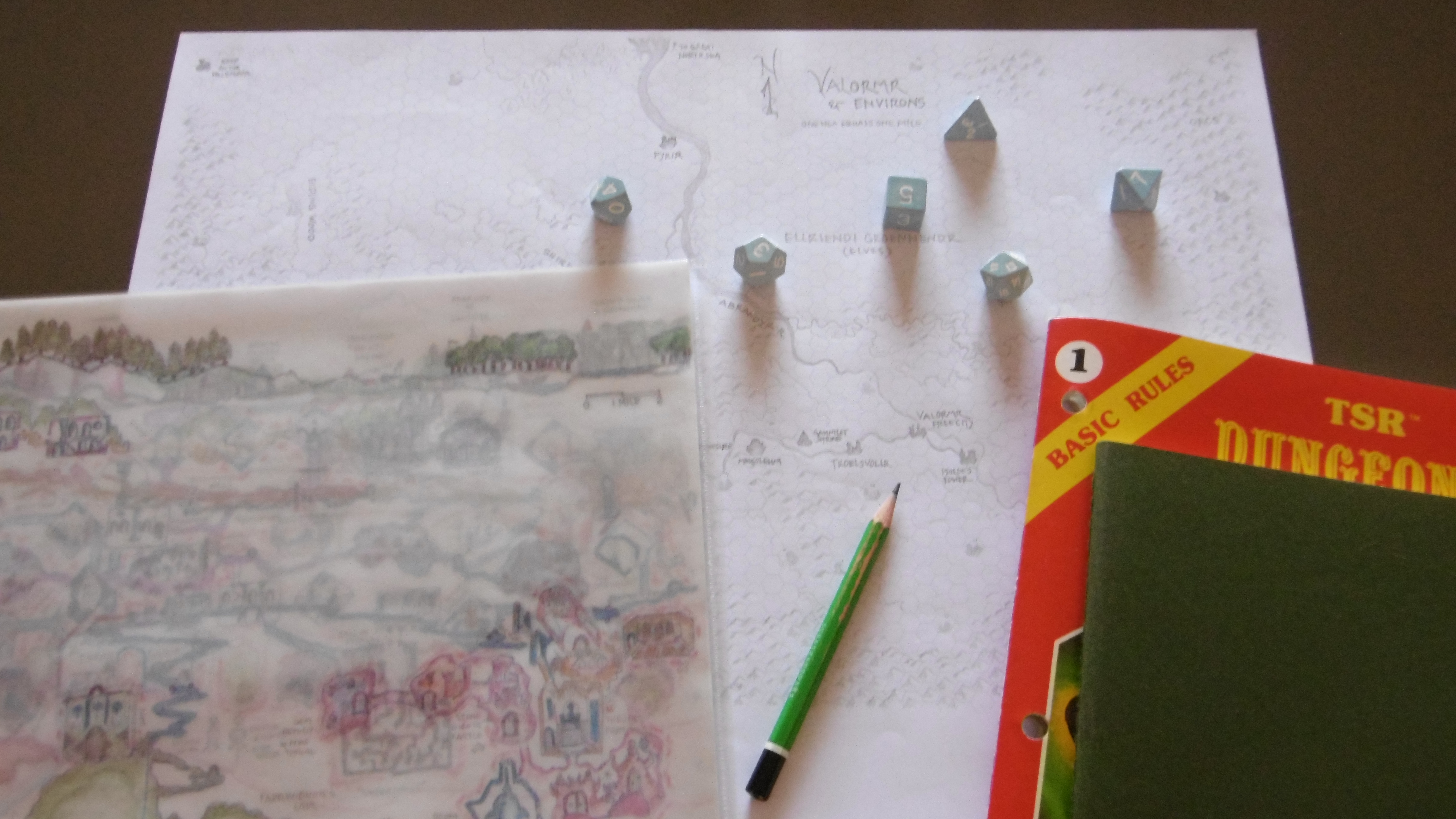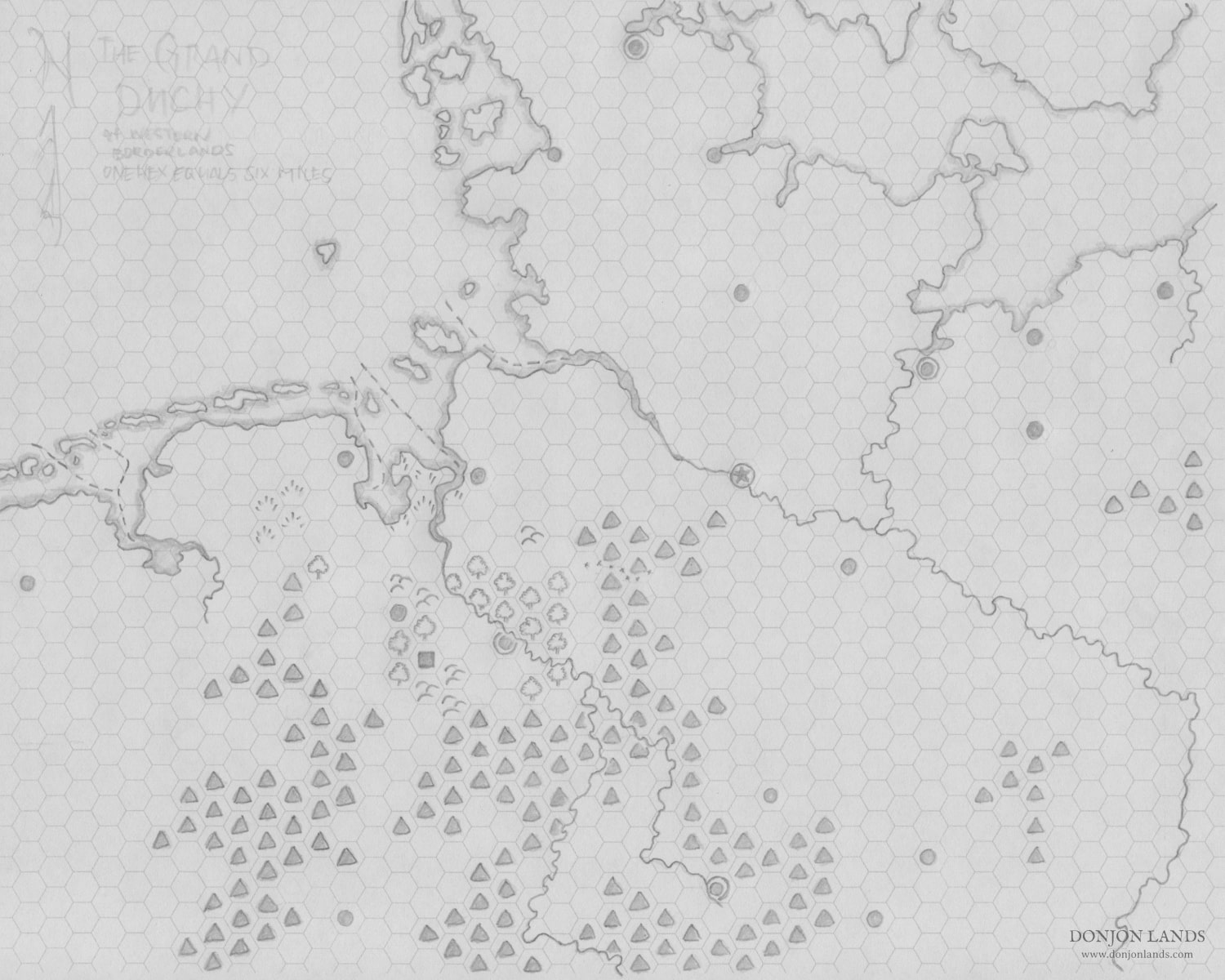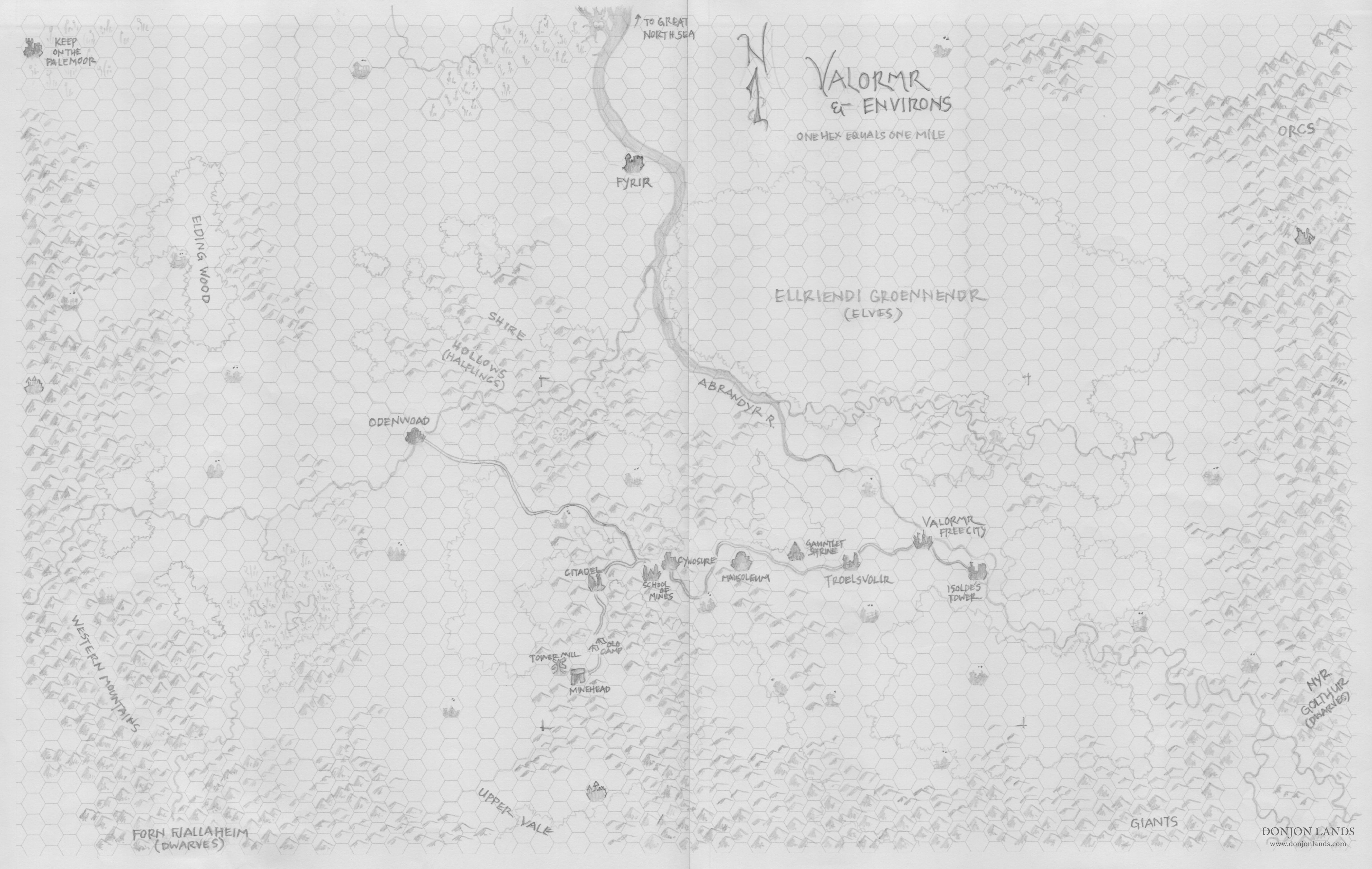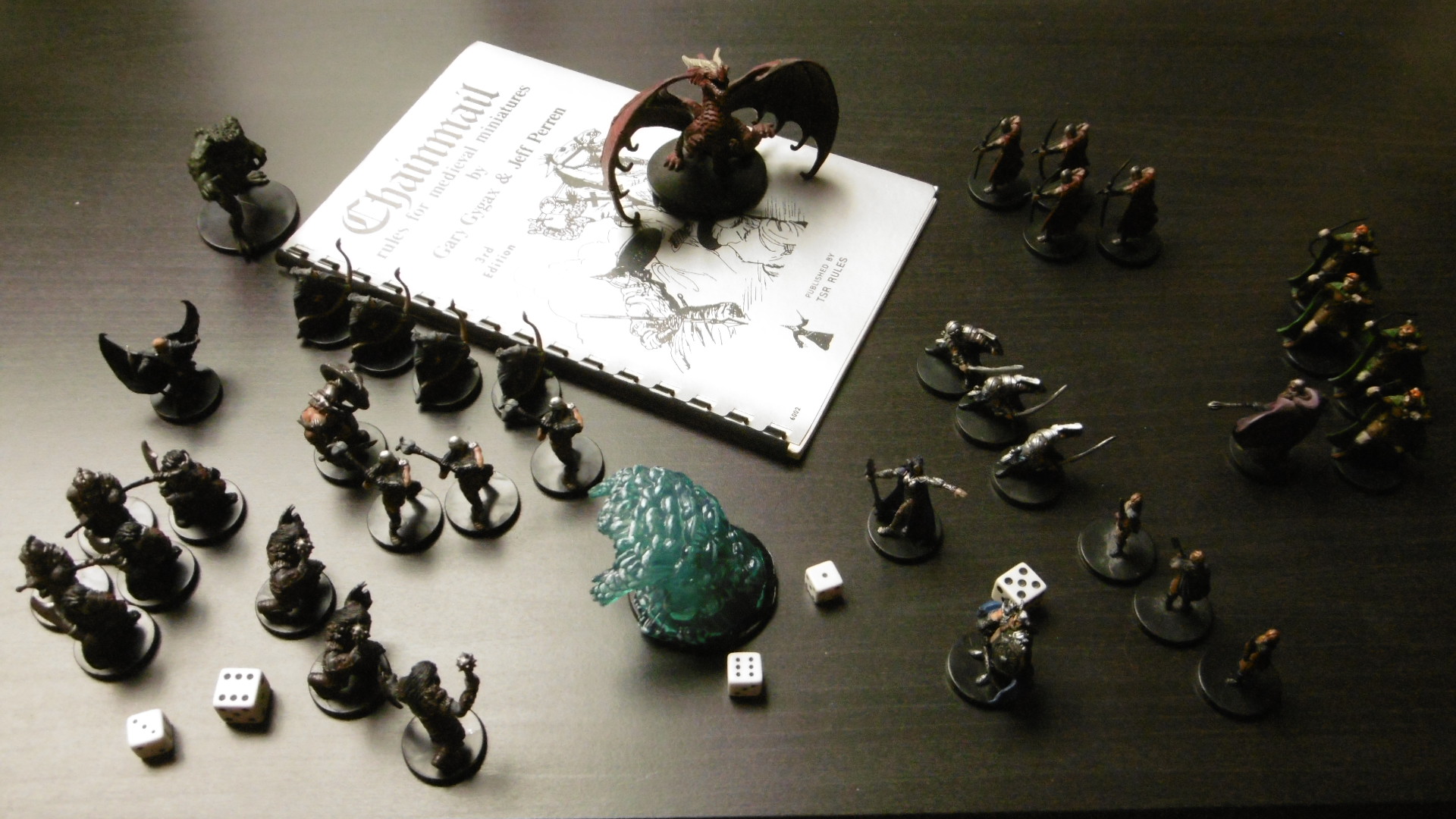Dracken Deep vs. Ternemeer
Afternoon light seeps through Darkmeer’s mists. At Aldefane, Solon Theros, from the loggia, surveys the field below. His eyes glow red through a steel visor. Atop a tall tower crouches Anax Archontas. Diamond pupils, large as shields, gleam through slits.
Terrain
The simplest version of the scenario is played on a featureless field. To exercise the terrain effects rules, I embellish the arena.
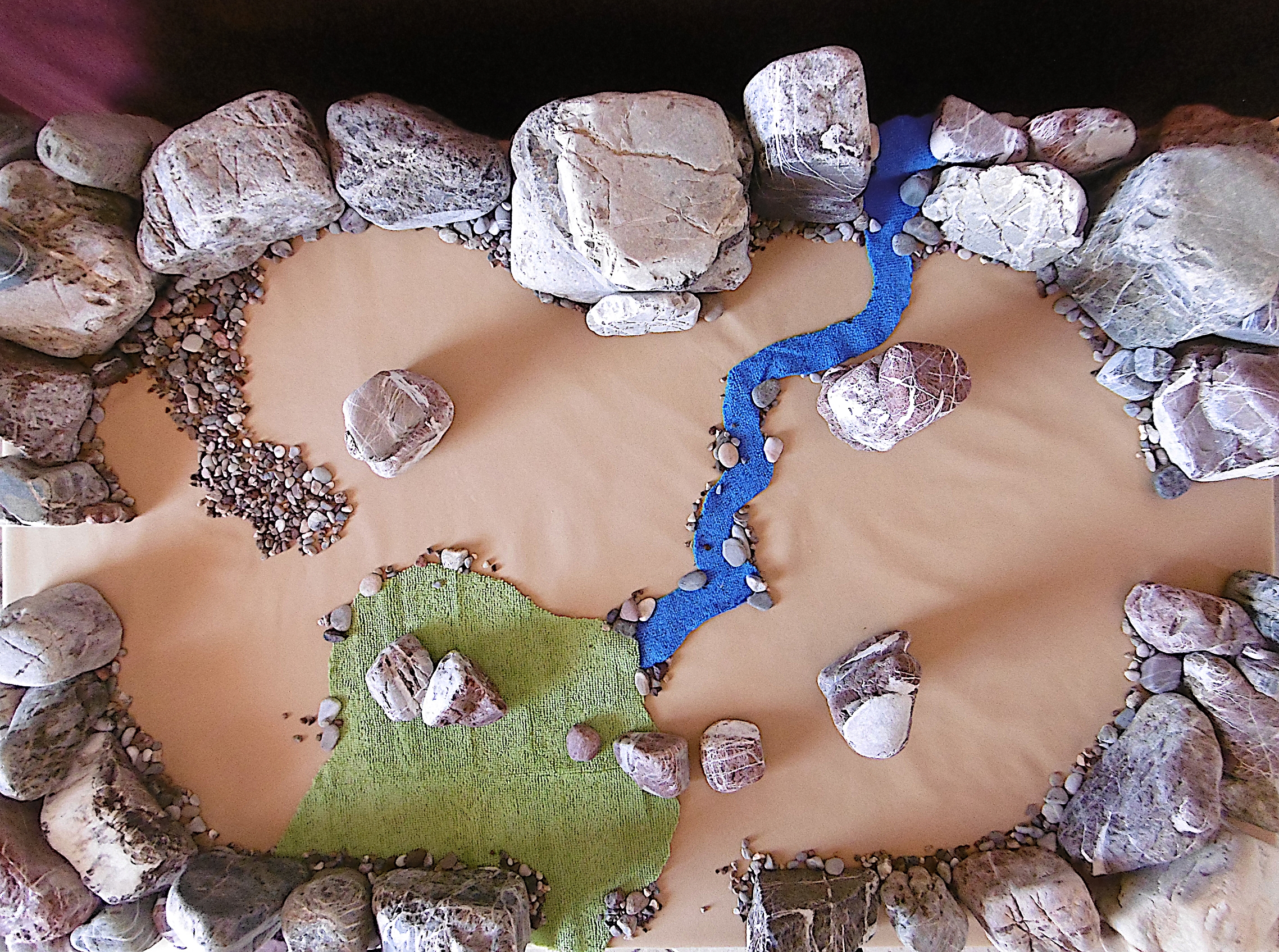
The table is 35″ × 22″—I reserve the dining table for Valormr’s climactic battle. The arena interior, 18″ × 30″, scales to 360 by 600 yards.
A loggia, still intact, overlooks the arena from the north. Beside it, a stone tower reaches 480 feet into the fog above.1 An ancient fountain (off table) still flows. Water spills through cracks to form a stream (blue), which floods low ground (bog, green). Massive columns (stones), which once supported a roof, lean at discomforting angles. The sinking ground toppled one of the four. It lies half submerged in the bog. Elsewhere, the decaying structure deposits rubble (pebbles) on the otherwise hard-packed dirt. A large gate, now destroyed, once enclosed the south side. A door is set in each semicircular end, east and west.2
With 120-foot bases, the columns, whether standing or toppled, block movement, line of sight, and field of fire. Consider rubble as rough terrain. The stream is 20 yards wide at all points. Otherwise, see the Terrain Effects table (Chainmail, 9).
Champions of Chaos
“Dracken Deep vs. Ternemeer” is the skirmish phase of Champions of Chaos, an introductory wargame scenario, in which Solon Theros chooses champions to fight for Chaos.
Figures
The orders of battle give the number of figures by cost and troop type for each force.
| Orders of Battle | Dracken Deep | Ternemeer | |||
|---|---|---|---|---|---|
| Troop Type | Cost | Figures | Total | Figures | Total |
| Peasant | 0.5 | 3 | 1.5 | ||
| Light Foot | 1 | 5 | 5 | 4 | 4 |
| Heavy Foot | 2 | 4 | 8 | 3 | 6 |
| Armored Foot | 2.5 | 10 | 25 | 9 | 22.5 |
| Additional Weapons | |||||
| Bow | 3 | 4 | 12 | ||
| Longbow | 4 | 4 | 16 | ||
| Total | 19 | 50 | 19 | 50 | |
Notes on Orders of Battle
- Additional weapons count only for total points; the figures are already counted.
- Commanders are not purchased. They don’t fight. Their presence impacts troops on the battlefield as per Chainmail’s commander rule (21).
- Dracken Deep Bows are Heavy Foot; Ternemeer Longbows, Light.
At 50 points per regiment, Anax Archontas spends 100 points, which are deducted from Chaos’s total for the Valormr Campaign. With the points, the dragon could have bought five heroes. He expects Solon Theros to produce more.
Deployment
Regiments are divided into formations of like troops called units.3 The commanders dice for first go. The winner chooses a side of the stream in which to setup her troops, positioning herself in the stands above. Her opponent takes the other side.
The commanders, in turns, then place one unit at a time, each anywhere on her side of the stream.4 The commander figure is also placed in turn on the battlefield.
Start
When the last unit is deployed, Solon Theros orders the doors closed. Two figures position themselves in the south gate. One holds an axe, the other a whip. Both wear black hoods.
Claws scrape granite as the dragon adjusts position. Pebbles and dust fall in a plume from the tower.
Solon Theros scans the assembled troops. “Who flees kneels—before the executioner… after long torture.”
The superhero begins the battle so: “Destroy your enemy; give no quarter.”5
Begin with the Turn Sequence (Chainmail, 9). Move-and-countermove preferred, as it’s faster and easier.
Morale: Test Post Melee Morale (15) as normal but replace a surrender result with a rout. Furthermore, a unit that fails a check for Instability Due to Excess Casualties (17) is not removed from play, nor does it surrender. Instead, each time a unit fails this test, it suffers a penalty (-1) on one dice whenever a roll is made. So, if a unit fails a second time, it takes a -1 from two dice.6
Objective
Score points by removing enemy figures from play. Each figure is worth its purchase cost, including additional weapons. The commander with the most points when Solon Theros calls a halt wins.
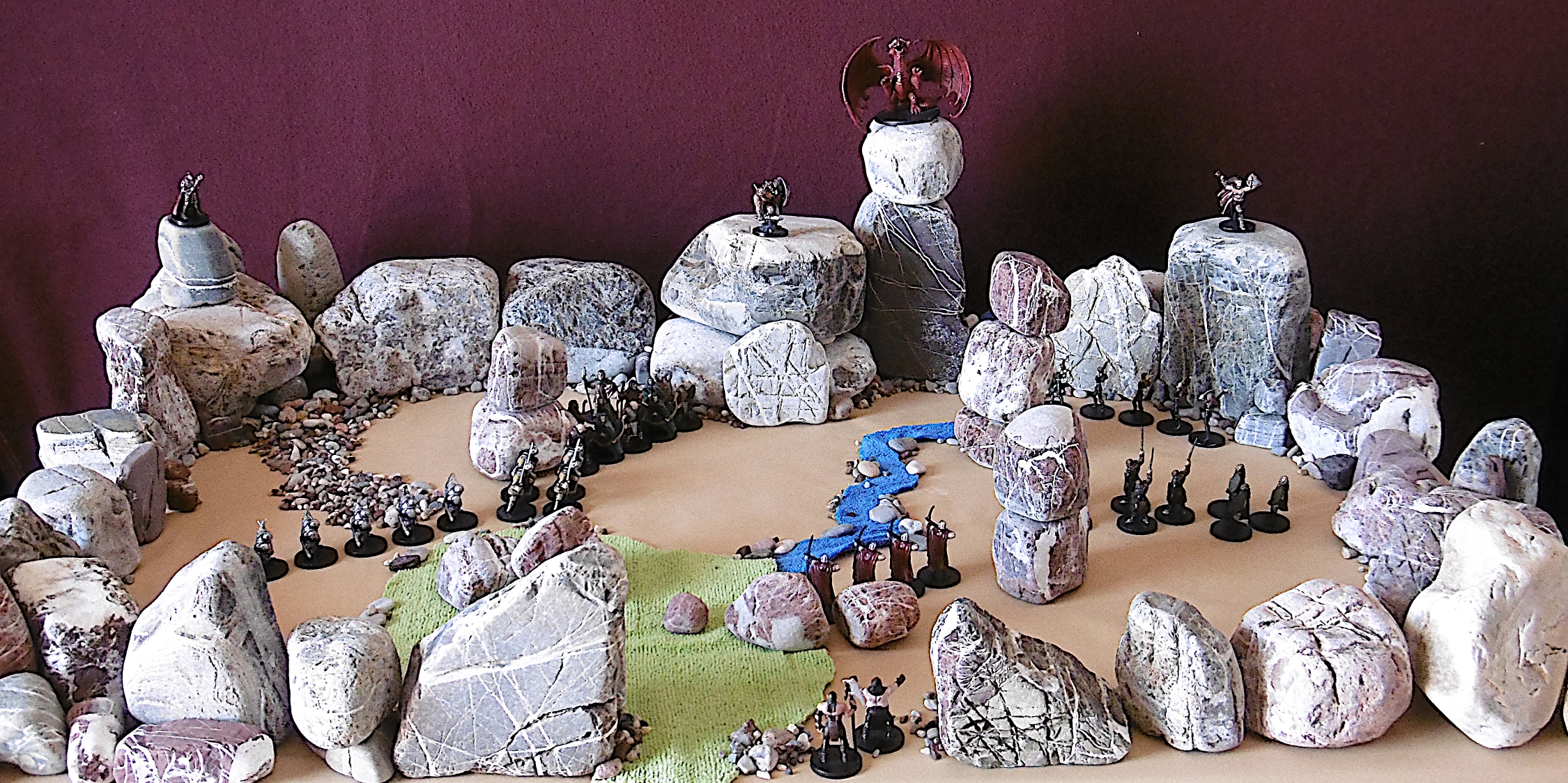
Notes
1 The tower’s height puts the battlefield 30 feet outside the range of the dragon’s fear effect.
2 The tabletop arena is built from stones quarried from the wintertime model of Throrgardr.
3 Larger forces might have enough figures of a troop type to make multiple formations. In that case, a formation of like troops may be added to a previously placed formation.
4 Another scenario, perhaps called “Champions of Law,” might restrict setup to a smaller area.
5 Prisoners, the rules for which are too complex for the scenario, are disdained by Solon Theros.
6 Tracking accumulated penalties for instability might be a record-keeping burden. I suspect though that a unit fighting with even the initial penalty won’t last long.
